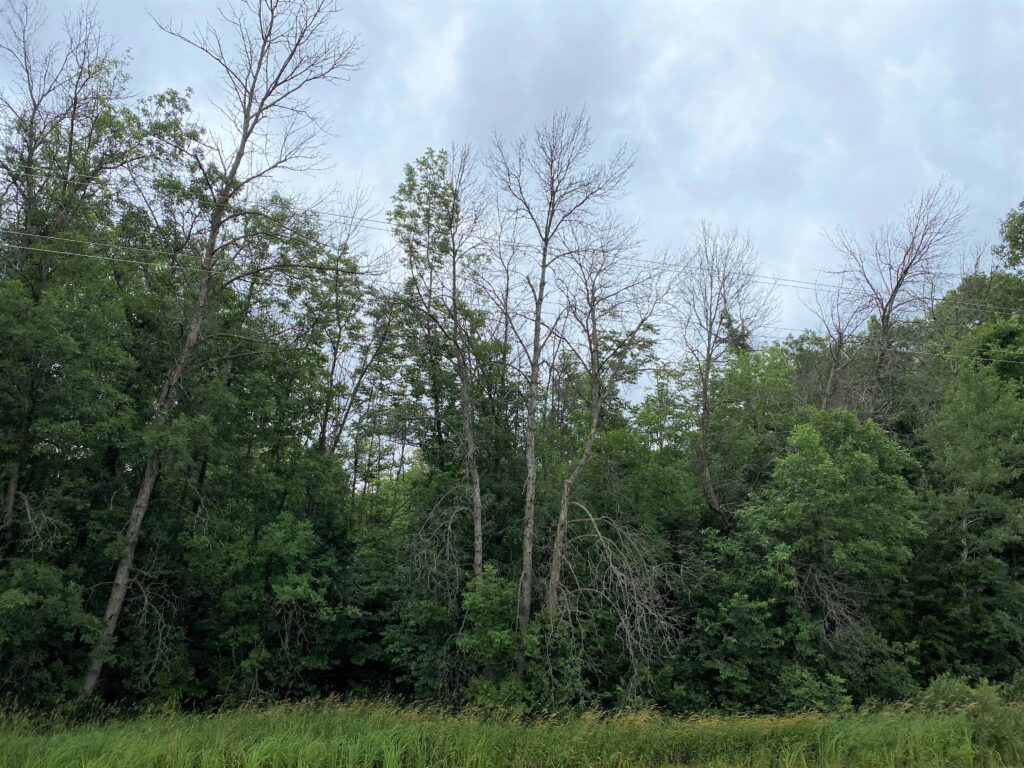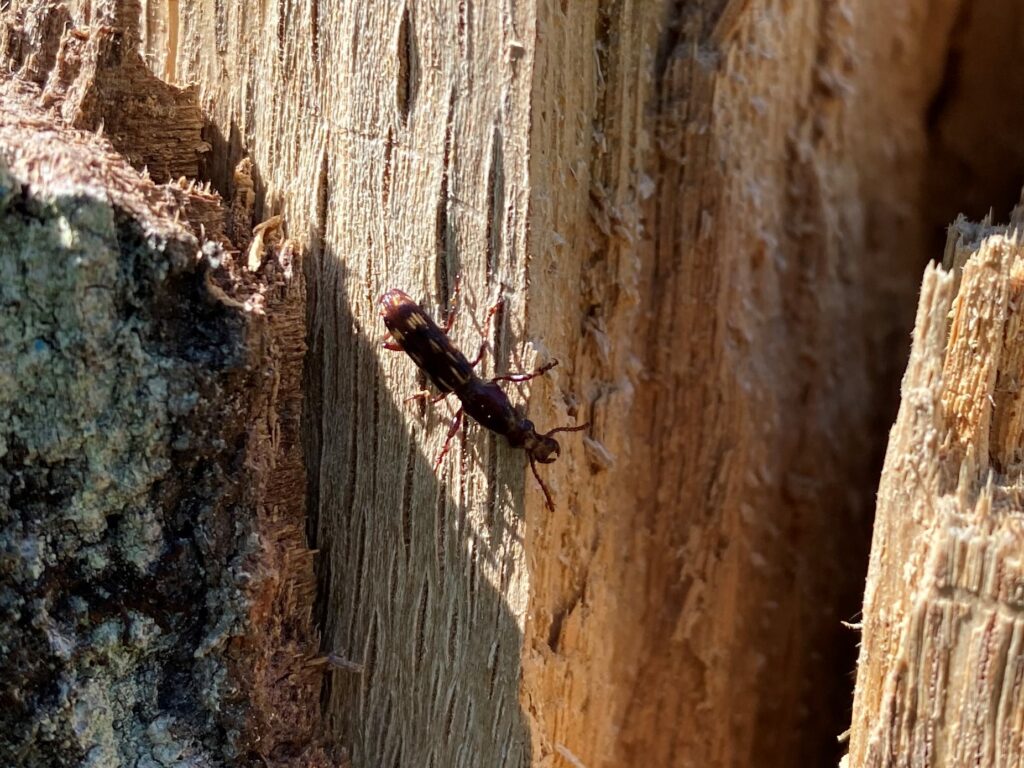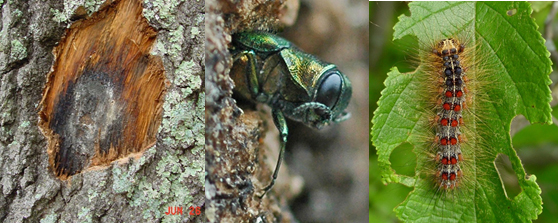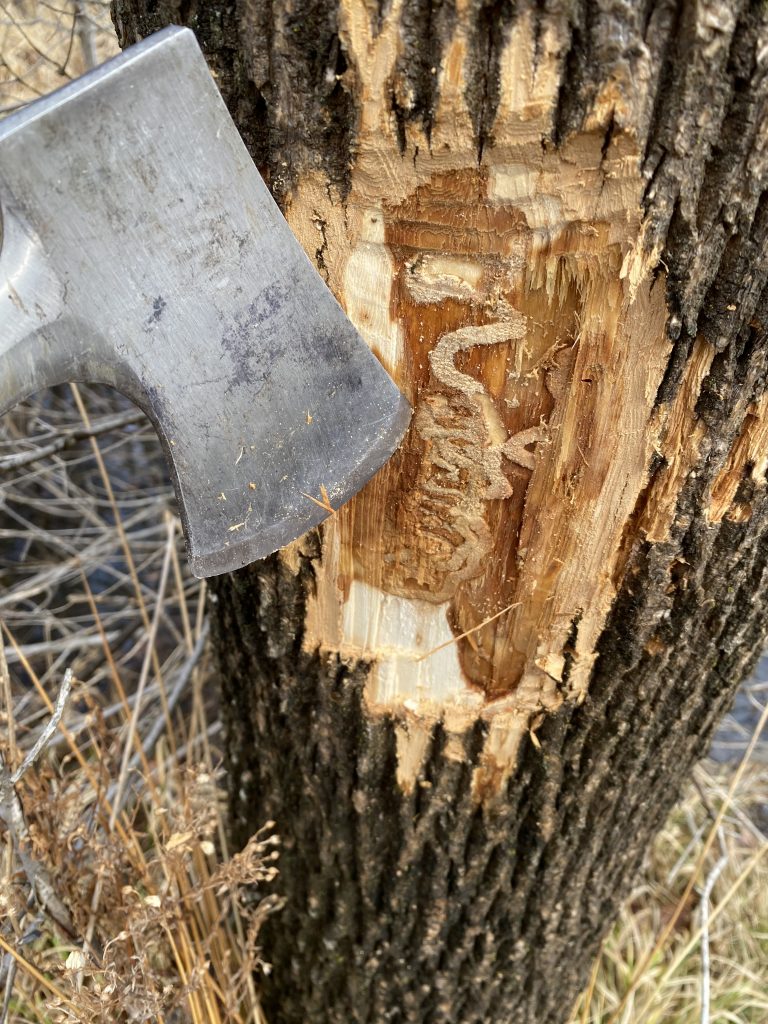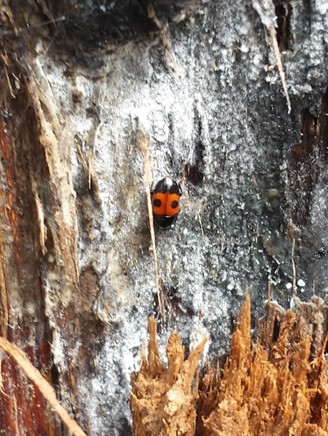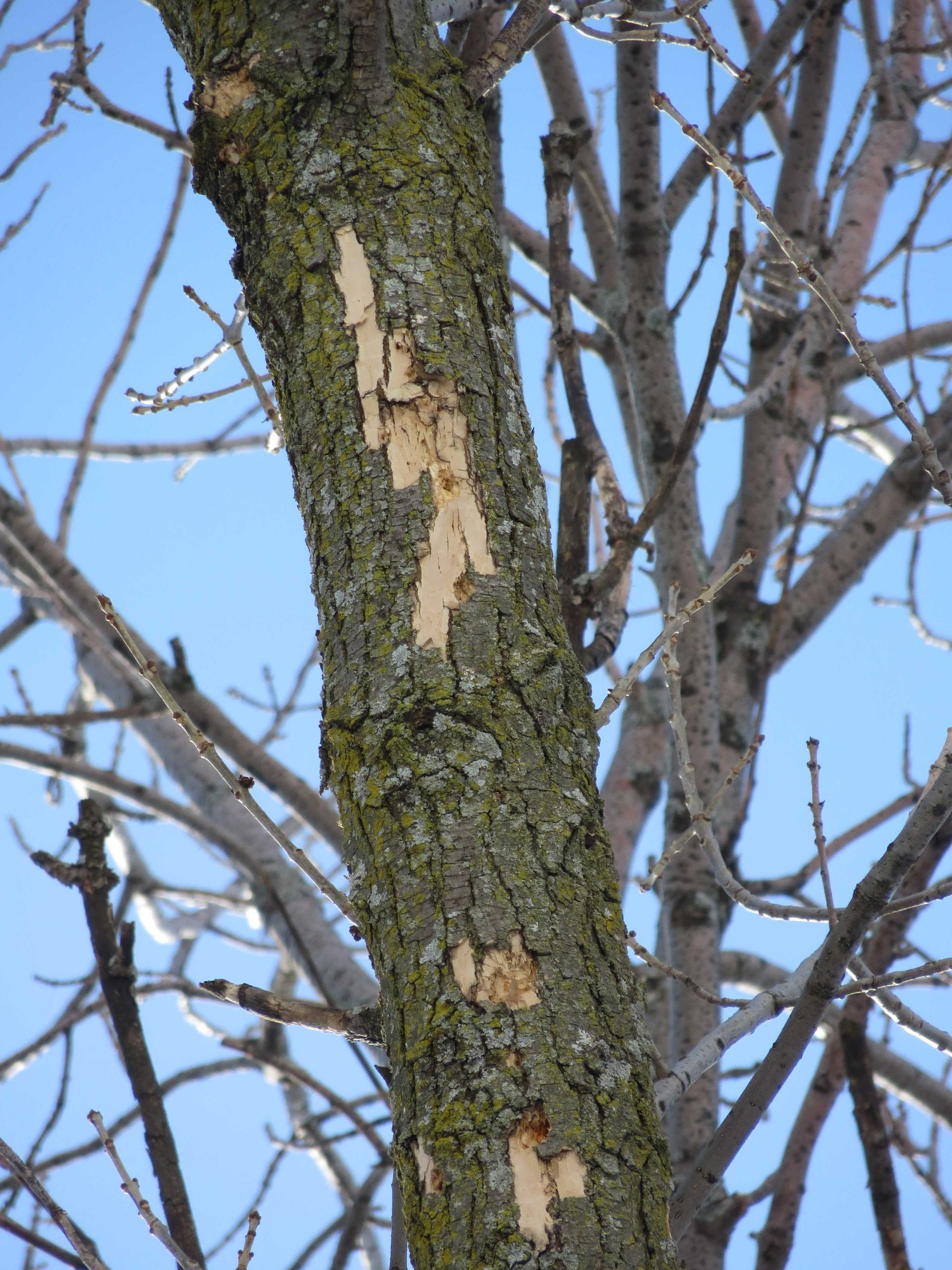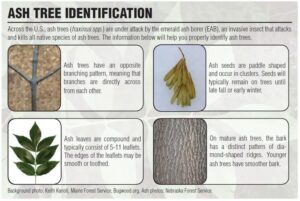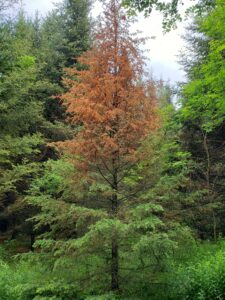By Linda Williams, DNR Forest Health Specialist, Woodruff, Linda.Williams@wisconsin.gov or 920-360-0665.
Emerald ash borer (EAB) has been detected for the first time in Iron County, in the Town of Oma. Many of the black ash at this site are already dead, with other trees still declining. EAB was first identified in Wisconsin in 2008 and has now been found in 60 of Wisconsin’s 72 counties.
Did you know that it takes fewer EAB larvae to attack and kill a black ash compared to a green ash or white ash? This means that black ash will have fewer galleries under the bark and consequently less woodpecker flecking than you would typically see with green ash or white ash.
EAB was federally deregulated as of Jan. 14, 2021 and Wisconsin instituted a state-wide quarantine in 2018, so there are no regulatory changes due to this find. Emerald ash borer silviculture guidelines were created to help landowners make decisions about management in their woods. All forest sites are a bit different and it can be overwhelming to try to decide what management, if any, should be done in your stand and these guidelines are designed to help answer those questions.
Continue reading “Emerald Ash Borer Identified In Iron County For The First Time” →
